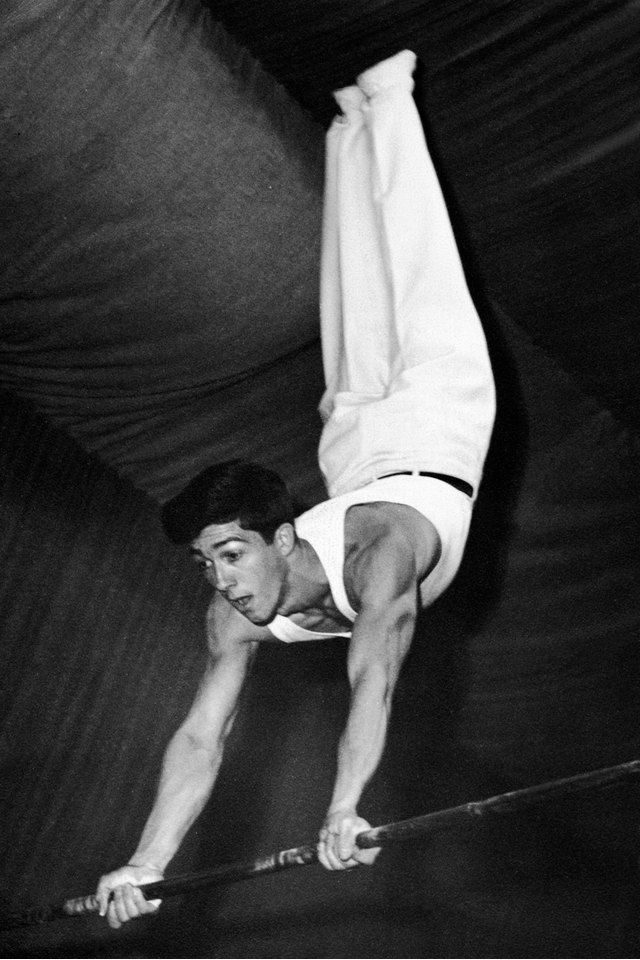Beginning Skills on the Horizontal Bar in Gymnastics

The horizontal bar, also called the high bar, is the most crowd-pleasing event in men's gymnastics, according to USA Gymnastics. On the horizontal bar, a gymnast must successfully complete a series of swings, turns, release moves and a dismount including flips and a steady landing. The release moves involve letting go of the bar and flipping 12 to 15 feet over the bar before grabbing it again and continuing the routine. Before these advanced skills are attempted, a gymnast must master the basic elements required for horizontal bar work.
The Horizontal Bar
The horizontal bar is 9 feet tall, almost 8 feet long and just over an inch in diameter. It is made from wood and stands securely with the help of metal poles. Most gymnasts use chalk on their hands to prevent themselves from slipping off the bar. Leather grips can also be worn to help your hands stay on the bar. The high bar is one of six regulation events in men's competitive gymnastics. Most high bar routines begin with the gymnast hanging from the bar.
Cast Handstand
Learning to cast to a handstand is necessary because many gymnastics skills on the horizontal bar begin from a handstand position. To do a handstand, hold yourself up on the bar and lean forward, over the bar a bit. Swing your legs forward for momentum and then back behind you, using your stomach and arm muscles to left your legs over your head into a handstand position. Your head should be parallel with your ears and your eyes looking at the bar below you.
Baby Giant Swing
A giant swing is performed in nearly all horizontal bar routines. From a handstand position, you have to swing under the bar, completing a full circle and ending in the same handstand position. This takes practice, and a beginning high bar skill that helps you learn it is called a baby giant swing or a three-quarter giant swing. Cast into a handstand and then allow your body to fall counterclockwise away from the bar while you are holding on. As you swing under the bar, bend your waist and bring your legs over the bar. You should end with your arms supporting you upright, and your hips on the bar.
Flyaway
The flyaway is a beginning skill that will teach you the fundamentals of dismounting the horizontal bar. You can cast to a handstand or simply start with your hips on the bar and your arms supporting you. Push away or fall down counter-clockwise from your handstand and swing with a straight body under the bar. As you feel your body begin to swing back up, let go of the bar and pull your knees over your head so you do a back flip off the bar. Look for the ground as you are flipping, so you can land safely on your feet. Always land on a soft mat.
Safety Considerations
Beginning gymnasts should always work with a coach or a spotter nearby and plenty of mats under the bar to ensure safety and soft landings. To prevent injuries, do not move onto intermediate and advanced moves until you have mastered the basics. Increasing the strength in your upper body and stomach muscles will also help you on the horizontal bar.
References
Writer Bio
Cari Oleskewicz is a writer and blogger who has contributed to online and print publications including "The Washington Post," "Italian Cooking and Living," "Sasee Magazine" and Pork and Gin. She is based in Tampa, Florida and holds a Bachelor of Arts in communications and journalism from Marist College.
